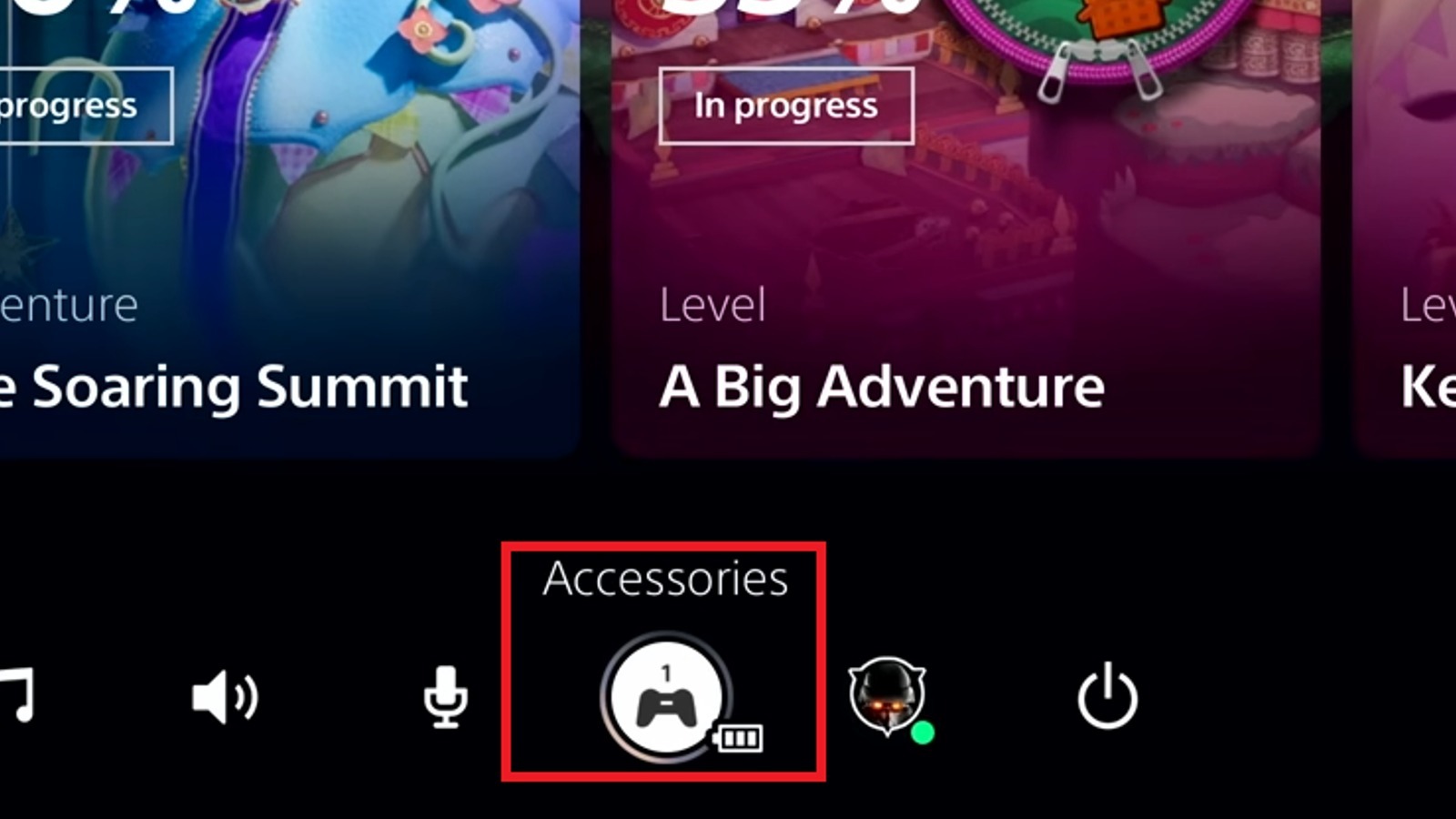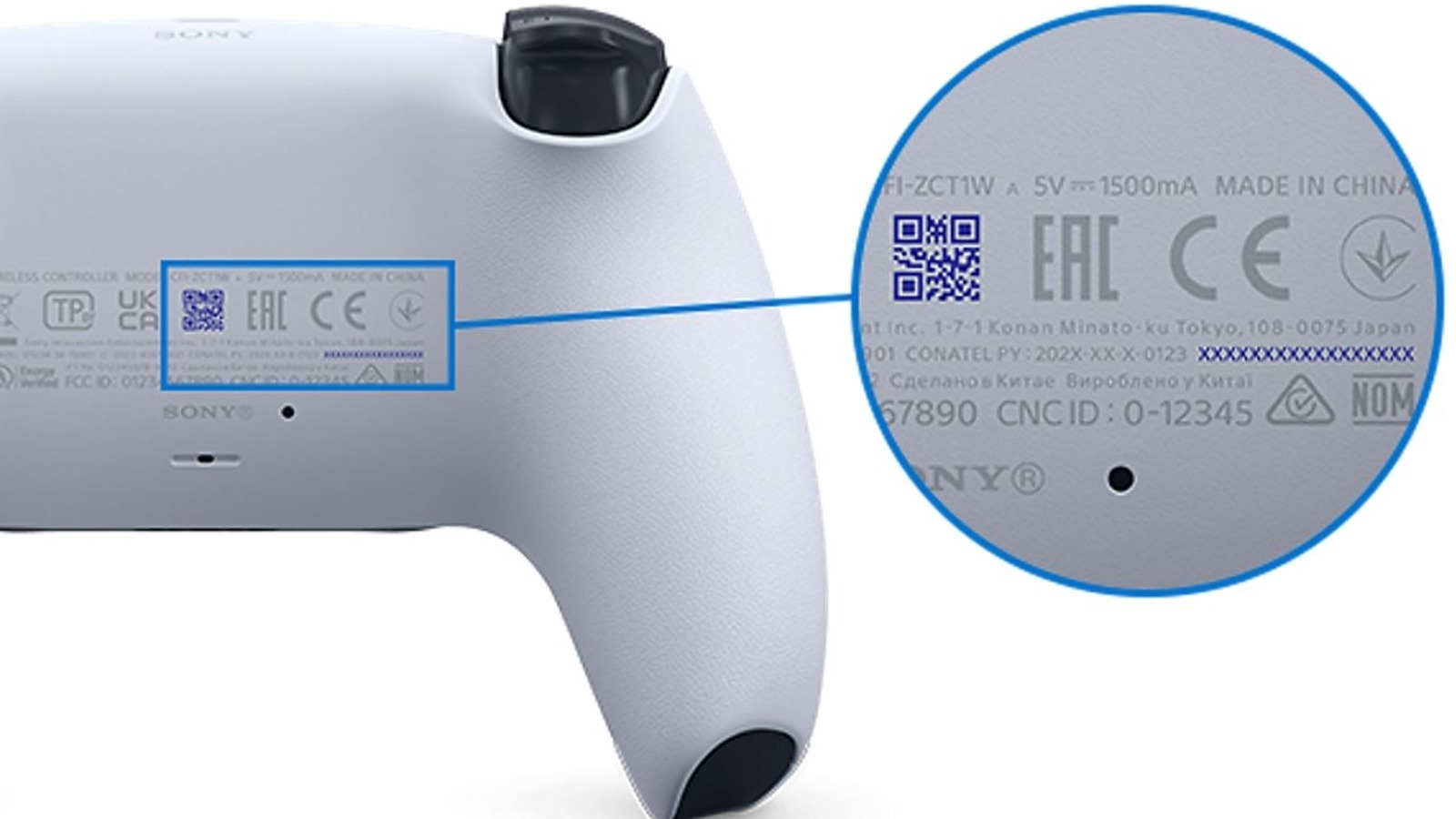

How To Reset A PS5 Controller (And Why You Might Need To)
source link: https://www.slashgear.com/1305742/how-to-reset-ps5-controller/
Go to the source link to view the article. You can view the picture content, updated content and better typesetting reading experience. If the link is broken, please click the button below to view the snapshot at that time.

How To Reset A PS5 Controller (And Why You Might Need To)
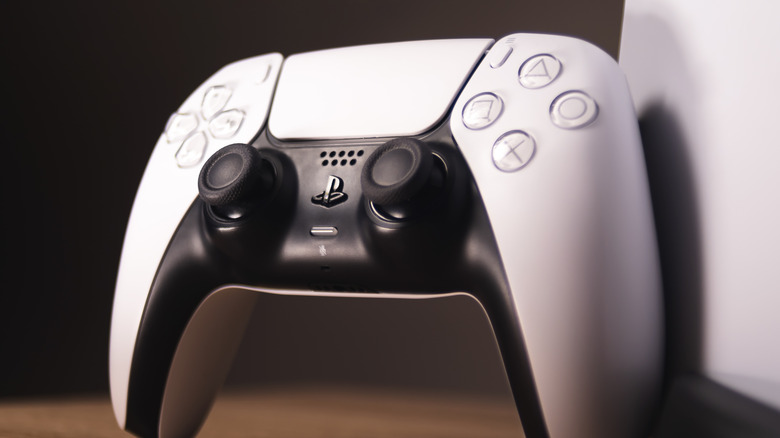
A video game controller is meant to do exactly one thing: control your games. When it's not doing that, you may be tempted to throw it against the wall in frustration. Since not all controllers are made of indestructible Nintendo plastic anymore, though, it would probably be in the best interest of you and your wallet to seek more constructive solutions instead.
For instance, let's say your fancy new PlayStation 5 DualSense controller is on the fritz. Maybe you're experiencing input lag or drifting, maybe you're trying to pair the controller with a different device, or maybe it's stopped responding altogether. Whatever the reason, before you go bonkers on the controller and waste $70, there are a couple of methods you can try to give it a proverbial kick in the rear and get it back to normal. Specifically, you can try one of two types of reset: a soft reset or a hard reset.
How to soft reset a PS5 controller
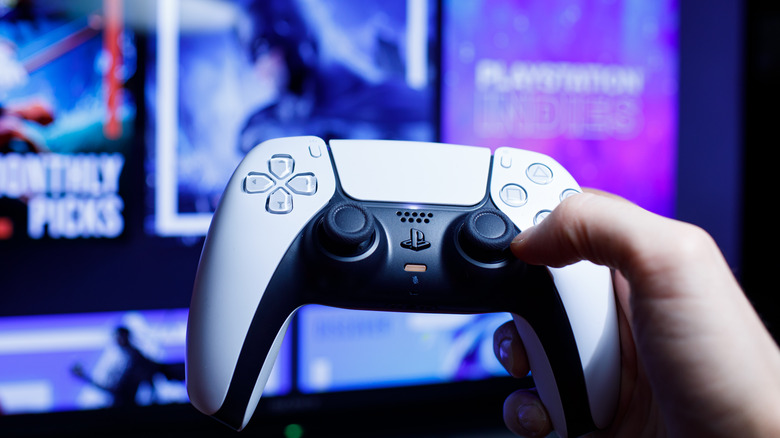
In the event your PS5 controller is experiencing some small issues like pairing interruption or input lag, the first tool in your response arsenal is the soft reset. A soft reset is essentially a power cycle — that is, turning the controller on and off without resetting any of its internal data. Reconnecting after a soft reset is faster than a hard reset, so it's better for simpler problems. Here's how to soft reset your PS5 controller. Note that your controller will need to be paired to your PS5 to use this method.
-
Turn on the PS5.
-
Press the PS button on the controller to bring up the Control Center.
-
Select the Accessories option.
-
Select the PS5 Controller option.
-
Click "Turn off" to power down the controller.
-
Press the PS button on your controller again to power it back on.
Once you power your PS5 controller back on, it should re-pair with your PS5 console automatically, though you can also manually pair it by connecting it to the console using a USB cable. Hopefully, that quick cycling will be all you need to get things back to normal.
How to hard reset a PS5 controller
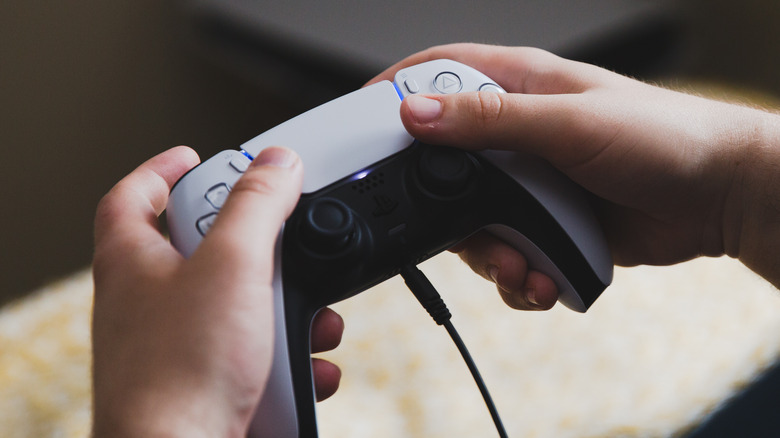
In the event you're experiencing a more severe issue with your PS5 controller, such as it becoming completely unresponsive or absolutely refusing to pair with your PS5 console, you may need to employ some firmer tactics. Namely, you'll need to perform a hard reset. To perform a hard reset, you'll need a small, thin tool or object like a paperclip, as well as the USB cable that should have come with your PS5 console.
-
Power down your PlayStation 5 console.
-
Check the back of your PS5 controller to find a small circular switch beneath all the writing.
-
Using your thin tool, press the circular switch in.
-
Hold the switch in for three to five seconds.
-
Remove the tool from the PS5 controller.
-
Power your PS5 console back on.
-
Connect the controller to the console via the USB cable.
-
Press the PS button on the controller to power it on and sync it with the console.
Despite the intense terminology of "hard reset," this method should not damage your PS5 controller in any way. It's just a bit more cumbersome to perform than a soft reset, so it shouldn't be your first move.
When you should reset your PS5 controller
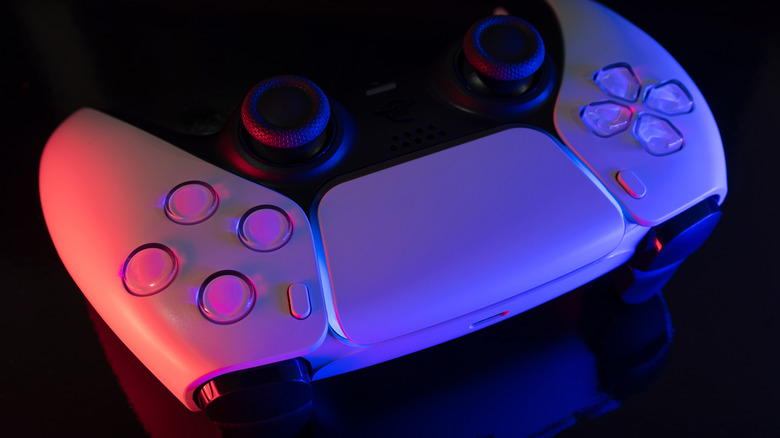
While the means by which you can reset your PS5 controller isn't especially dangerous or invasive, it is still normal to be a little reluctant to perform them if you don't actually have to. So, what situations would actually call for either a soft or hard reset of a PS5 controller? Generally speaking, any situation wherein you cannot use your controller the way it's meant to be used can warrant a reset.
For instance, let's say your controller spontaneously unpairs from your PS5 console and you can't seem to get it to re-pair. It's possible something has gone weird with its Bluetooth signal, so a reset would definitely be warranted there. Or, perhaps the controller has stopped responding altogether. Even if you press the PS button, none of the lights turn on and your PS5 won't respond to it, even if you connect it with a hard line. Assuming the battery isn't dead, that's another prime reset situation. On that note, though, you should definitely make sure your controller is properly charged before you assume the problem is connection shenanigans. Resetting won't do anything if the controller is running on empty, after all.
The 15 Best Game Controllers Of All Time - Ranked!
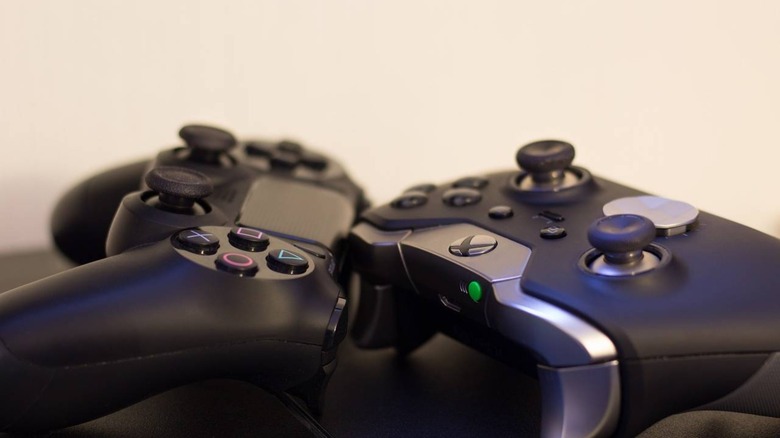
If you're a gamer, there's a good chance that you have a favorite game controller. Even PC die-hards like me can't deny that some games are simply better with a controller, which means that many of us have our favorites too. There have been plenty of game controllers throughout the years; some of them certainly better than others. Here's SlashGear's ranking of the best of the best.
Before we dive into the list, let's be clear that we're not ranking every game controller here — we're simply ranking the best. We've seen a ton of game controllers throughout the years, and trying to include all of them would only serve to make this list unbearably long; that's true even if we just kept it to first-party controllers. Sorry Virtual Boy controller, but you're going to have to sit this one out. With that disclaimer of sorts out of the way, let's dive into the list.
15. Guitar Hero guitar
The perfect rhythm game controller doesn't exist ... oh wait, it does, and it's the one that came with Guitar Hero. The team that created the guitar-shaped controller went on to create a franchise that has been incredibly successful. Aerosmith made more money from their branded version of the game than they made from any of their albums (via Multiplayerblog). Created by Harmonix and RedOctane, the game plus the guitar controller took only nine months from conception to retail (via Vice).
The guitar controller was inspired by a Gibson SG, with five buttons on the fretboard so players could make three power chord positions. You also had a whammy bar and a strum bar to control the rhythm-based gameplay. Inspired wasn't the best choice of words, as Gibson sued Harmonix over its close resemblance. That lawsuit ended up in a sealed settlement (via Patent Arcade), with the best guess being that Gibson's patent wasn't broad enough to cover how the game controller was used. The guitar controller genre was hugely successful, with new controllers accompanying each game in the "Guitar Hero" series. Oh, and they aren't just for music games, with game streamers like SuperLouis64 using them to play titles like "Elden Ring."
14. Sega Genesis six-button gamepad
There's a lot of people out there who are familiar with the Sega Genesis, but the controller you used the most was probably determined more by your region than anything else. Here in the U.S., most us are probably more familiar with the three-button Genesis controller, which is an interesting controller that probably would find its way onto some other lists like this. The three-button controller was the one I used the most back in the day, but there's no denying that the six-button controller was ultimately the better one.
For starters, the six-button controller was just straight-up necessary for fighting games, since it's a lot easier to string moves into combos when you have six buttons instead of just three. It also, in my option, feels better in the hand, as it was a little bit smaller than the three-button controller. It's a shame that Sega didn't pack the six-button controller in with the Sega Genesis Mini, and in fact, that might be the only flaw of an otherwise stellar retro console.
13. N64 controller
When released in 1996, the Nintendo 64 (N64) brought 3D graphics to the console world for the first time (via History Computer). That innovation was powered by a 64-bit CPU, which also gave the console its name. Moving around in 3D space required more precision than the directional pad that home consoles used then, so Nintendo put a thumbstick onto the N64's controller. It looked like an analog joystick, but it wasn't. It was digital. Inside the controller, the thumbstick worked like the ball in a computer mouse. That gave it enough sensitivity to navigate through 3D games, including degrees of movement (via NEXTGen). The octagonal ring around the thumbstick helped guide you to the eight directions you were used to on directional pads for movement.
The M-shaped controller had a D-pad on the leftmost arm with an action bumper, a thumbstick, and a Z-button trigger on the middle arm. There was one more action bumper and six action buttons on the right arm. The interesting thing about the design is that Nintendo intended it to be held one of three ways, depending on the game being played. That meant you were designed to use only some buttons at any time, unlike modern controllers. The N64 controller also had expansion ports for memory cards or the Rumble Pak, making this the first controller with vibrational feedback.
12. Nintendo Gamecube controller
When it comes to the Gamecube controller, opinions definitely fall into "love it or hate it" camps. Starting with the Nintendo 64, Nintendo definitely had a string of unconventional controller releases — the Gamecube controller was followed by the Wii remote, which itself was followed by the massive Wii U gamepad. Out of all of these controllers, though, I think the Gamecube controller is the best.
The button layout does take some getting used to, but once you have that familiarity, it feels great to use. The left thumbstick is solid, though the C-stick should have been a second fully-fledged thumbstick just like the left one was. With the GameCube controller, we also got one of the best wireless controllers ever made in the Wavebird, which seemed almost before its time in terms of capability.
11. Meta Quest Touch Pro controllers
Meta's newest virtual reality headset comes with a new Quest Touch Pro controller. The new design removes the IR tracking ring from the previous Quest controllers and has more accurate tracking, as the tracking is now done on the controller. This is a big thing, meaning the controllers can be tracked even if they're behind the user. Meta achieved this by putting three cameras on each controller, one at the top and two at the front. Each controller has one of Qualcomm's Snapdragon 662 processors to handle that optical tracking.
Meta also improved haptic feedback using two linear resonant actuators and a voice-coil modulator for the "most complex and realistic haptic effects we've ever had" (via Meta). The new trigger has a sensor that can track the curl or distance from the trigger or where your fingertip is along the trigger's surface. You can also pinch-grip things in virtual reality, with the thumb rest having a pressure sensor. The only thing that could be an issue is durability. Meta's Quest Touch Pro controllers are a new product, and reports of damage are low. That said, Meta does know how to build a controller that lasts. Popular YouTuber, ThrillSeeker, put the Quest 2 controllers through a tumble dryer, and they still worked afterward.
10. Switch Pro Controller
Nintendo has been in the business of making Pro Controllers for a couple of generations now, and with the launch of the Switch, we saw Nintendo hit the mark perfectly when it comes to Pro Controller design. With that said, Nintendo has also fallen into this habit of charging a premium price for its accessories, and at $80, the Switch Pro Controller is no exception.
If you plan on playing your Switch on TV a lot, the Pro Controller is a must-have. It's so much better than using Joy-Cons in the grip that comes bundled with the console, and the Switch Pro Controller has the build quality to challenge its direct competitors — the DualShock 4 and the standard Xbox One gamepad. Often overlooked because of the Switch's unique Joy-Cons, you shouldn't skip the Pro Controller if you plan on doing a lot of gaming on your Switch.
9. Xbox Adaptive Controller
In terms of capability, the Xbox Adaptive Controller blows every controller on this list out of the water. Made for those who can't use a standard gamepad because of disabilities, the Xbox Adaptive Controller looks fairly simple on the surface, with its two big face buttons arranged in a slate-like build.
The secret to the Xbox Adaptive Controller's flexibility is in the row of 3.5mm jacks that stretches the entire top of the device. With these, users can plug in a huge range of peripherals, including buttons, switches, or pedals to create a controller layout that is tailored to their specific needs. The introduction of the Xbox Adaptive Controller meant that those who can't use a traditional gamepad (or a keyboard and mouse) still get to participate in one of the greatest hobbies around, and that's a beautiful thing.
8. Xbox 360 gamepad
For a number of years, the Xbox 360 gamepad was the controller to beat — the king of the controller hill, so to speak. Microsoft definitely had some missteps with the original Xbox and its absolutely massive Duke controller, but the Xbox Controller S that was released in 2002 corrected a lot of the Duke's mistakes and set the stage for the excellent gamepad that launched with the Xbox 360.
The controller is still a good choice for those who are looking for a gamepad to use on PC, and it'll likely keep that status for sometime to come. Still, as good as the Xbox 360 controller was some years back, it's been supplanted by more modern controllers, particularly those from this generation.
7. Wii remote and Nunchuk
Nintendo has never been afraid to push controller technology forward, and the Wii remote with its companion Nunchuk is a perfect example. That's down to how accessible the controller was to non-gamers. The well-executed motion controls made the Wii the console to buy, with just over 100 million units shipped. The Wiimote, a portmanteau of Wii and remote, lets you steer by turning the controller or hitting a ball with a flick of the wrist — just like in real life.
The Wiimote was created for simplicity, with a wireless connection to the Wii console. It used an IR sensor for cursor tracking in conjunction with an IR emitter bar plugged into the Wii, and sat either on top of or below your TV. That turned it into a wireless mouse for your Wii. The original Wiimote wasn't as accurate for motion tracking, so Nintendo added a Wii MotionPlus accessory with a multi-axis gyroscope inside (via NintendoWorld Report). This accessory was eventually incorporated into the Wiimote. The Wiimote could also be converted into a light blaster, a tennis racket, a golf club, a steering wheel, and more by clipping it into a plastic accessory.
6. Super Nintendo gamepad
If you're a retro gamer, it doesn't get much better than the SNES gamepad. Even though the Sega Genesis and the Super Nintendo were in close competition throughout much of the fourth generation in the early-to-mid 1990s, it seems that the SNES gamepad has achieved this iconic status that the Sega Genesis controller has not. Why is that?
The SNES gamepad had a lot of things going for it — it had a D-pad that even I as a Sega kid can't deny was really good. The face button layout is something we still see in modern-day controllers, and it was one of the first controllers to introduce shoulder buttons. It did a lot of things right and had few — if any — flaws, so it's no wonder the controller is still widely loved today.
5. Nintendo Switch Joy-Con pair
Nintendo's latest controller, the paired Joy-Con, is also one of its best. Developed for the Switch portable game console, they can be used docked to the console or removed for use in each hand or individually. That powers the Switch's main selling point: The console can be used handheld or docked to a TV. Joy-Cons have a thumbstick, four input buttons, and a trigger button. The right Joy-Con also has a plus button and a home button, with the left Joy-Con having a minus button and a dedicated button to take screenshots or short recordings.
Also featuring motion control, the Joy-Cons enable things like aiming, shaking, or flicking to control your onscreen character or their moves. Each little controller can be used as a pair for games that demand a more extensive range of inputs, or turned 90 degrees and used individually for more simple games or Nintendo's back catalog of SNES and NES games. You can also dock them to an accessory to make a larger, more traditional controller shape. Nintendo includes Joy-Con straps that securely attach the controllers to your wrists (something Nintendo learned about with the Wiimote). Joy-Cons have one major con — stick drift.
4. DualShock 4
I will openly admit that while I've owned every iteration of the PlayStation, I've never been a big fan of Sony's controllers, which mostly kept the same design from the introduction of the DualShock controller during the days of the PlayStation 1 all the way through the DualShock 3 with the PS3.
With this generation, though, Sony did more than just slightly tweak its controller design. Sony's design team was firing on all cylinders when it came up with the DualShock 4, giving us one of the best controllers ever made. It feels great to hold, the thumbsticks are superb, and it just feels like a step above the DualShock controllers that came before it.
3. PlayStation 5 DualSense
Before the PlayStation 5's release, Sony spent a lot of effort talking up the new controller it had created, the DualSense. Not for no good reason, either, as the new controller has multiple features that no other controller can match. Sony also tweaked the ergonomics of the DualSense, with a shape that's a more natural feeling to hold. It might be the best controller ever made, although it's fairer to say that it's the best standard controller that ships bundled with a console.
Sony got the basics spot-on with the DualSense. The thumbsticks are well-positioned and, more importantly, well-tensioned. The buttons feel good, and the battery life is good. Both triggers have a small geared motor to adjust tension and resistance as you play. In "Horizon Forbidden West," you can feel the tension in the string as you pull back Aloy's bow. Sony put advanced haptic feedback technology into the DualSense, which is more immersive than plain rumble vibration. Instead of a spinning weight, the DualSense uses linear resonant actuators (LRAs), the same tech smartphones use to power their haptic feedback. These use less power and can start and stop more precisely, leading to more nuanced feedback on your hands. The DualSense also has a handy speaker and microphone, which can be used for in-game voice chat, controlling your PS5 via voice commands, or leveraged by developers for in-game functions.
2. SCUF Reflex
Anyone familiar with professional eSports knows the name SCUF. Its custom controllers have been used in major tournaments across most big leagues, including the Call of Duty League. The company proudly says that "over 90% of top professional gamers" use SCUF controllers, which makes them deserving of a place on this list. SCUF's controller innovations are covered by more than 120 granted patents and designs, with 50 more patent pending applications (via SCUF). Microsoft licenses some IP to make the Xbox One Elite Wireless controller family.
Its latest creation is the SCUF Reflex range, created to improve on the PS5's DualSense controller. The three models are built around a common core, with four of SCUF's patented remappable paddles on the back. Button remaps can be stored on-device, and SCUF has deep customization of colors and designs. The Reflex also features interchangeable thumbsticks with various height and shape options, Bluetooth, a physical mute button for in-game comms, and USB-C for charging and wired play. The most expensive model, the Reflex FPS, removes the vibration modules and exchanges the adaptive triggers for instant triggers and bumpers, perfect for quick responses in FPS titles.
1. Xbox Elite Controller Series 2
If you frequent rankings like this one, then you probably saw this coming. Controller enthusiasts won't be shocked to see the Xbox Elite Controller Series 2 at the top of this list because it's simply the best controller money can buy at the moment. The problem, of course, is that it takes a lot of money to buy one.
At $180, the Xbox Elite Controller Series 2 definitely isn't cheap. If you have the cash to spare, though, you'll likely find that this controller is worth the steep price tag. Even if you aren't going to use all of the bits that come along with this controller — from extra paddles on the back and swappable d-pads to swappable, adjustable thumbsticks — the controller feels great in the hand with rubberized grips and a sturdy build. With the option of playing over Xbox Wireless, Bluetooth, or USB-C, the Series 2 improves on connectivity over the Series 1, addressing one of my major complaints with the Elite Controller family. It's an all around fantastic controller if you can stomach the price tag.
Recommend
About Joyk
Aggregate valuable and interesting links.
Joyk means Joy of geeK
